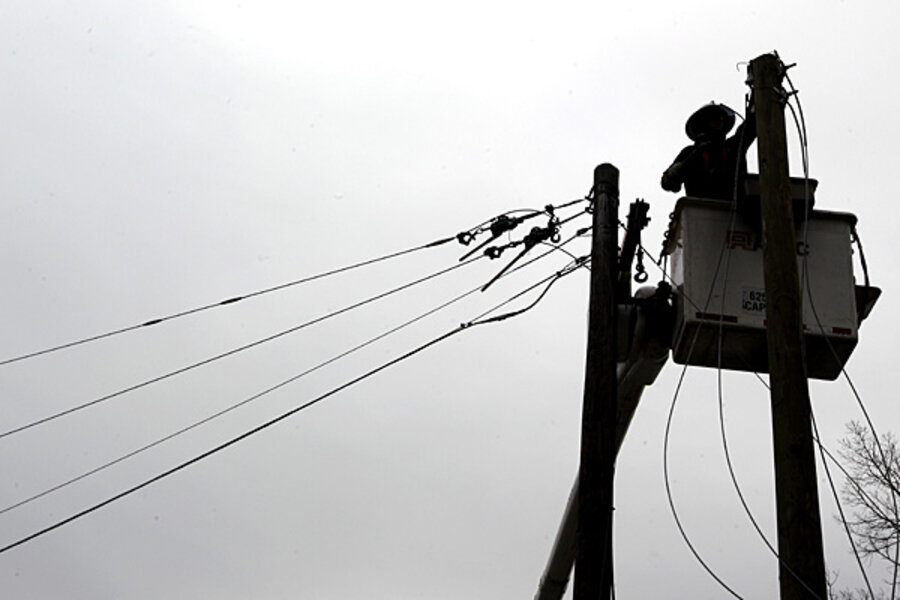How utilities can turn pilots into partnerships
Loading...
Utilities find themselves in unfamiliar positions as they chart their course in areas such as alternative fuel vehicles, smart grid, and distributed generation. In this last piece of our four-part series (See Part I by Mat McDermid, Finding the Regulated Utility Role in a Shifting Energy Landscape; Part II by Sam Shrank, How Behavioral Science Can Increase Energy Efficiency Adoption; and Part III by Jill Bunting and Raphael Tehranian, How Utilities Can Better Source Innovation), we discuss how partnerships with individual large customers to test new offerings, alongside traditional pilots, can help utilities find solid ground. Partnerships can both demonstrate to regulators that customers benefit from utility involvement in these areas and help utilities scope their ideal role.
Utilities have a long and successful track record of using technology demonstration pilots to better understand new innovations, test their ability to solve problems, provide increased or new benefits, and gauge customer and stakeholder interest. In a changing business environment, however, expanding into more customer-centric pilots would greatly help utilities position themselves to protect and expand their market standing.
Customer-centric energy partnerships of this type cover a broad spectrum, but there are a few required elements. First, they must begin with the selection of a customer partner, not a technology or utility offering. Second, the customer’s goals should determine the expanded or new offering, or most likely suite of offerings, included. Third, rather than lasting for a predetermined and usually short amount of time, they are meant to be merely the beginning of an ongoing relationship.
These partnerships allow utilities to learn more about customers and their needs, create new regulatory advocates among their customer base, and expand their remit in emerging service areas. In working with utilities to foster partnerships of this type, we have learned much about how this can be done.
Select the partner first: Right from the outset utilities must approach these partnerships differently than traditional technology demonstrations. Whereas in a technology demonstration a utility defines the new solution it wants to test and then builds the pilot around achieving that goal, energy service partnerships are built around an existing (or emerging), significant customer need, which guides the utility in developing the most appropriate suite of solutions .
Selecting a customer with the right level of enthusiasm and ability to devote resources to the project is critical to the success of the partnership. GreenOrder has worked with utilities to hold summits, workshops, and interviews with companies and communities. These discussions need not, and in most cases should not, be initially focused on a partnership to pilot new programs, but should rather be an opportunity for utilities to hear from important stakeholders and learn about their expectations and desires. Even if discussions do not progress beyond that point, utilities will have laid the foundation for enhanced relationships.
Create a joint vision: Conversations can then continue, where there is particular promise, to develop a jointvision and set of goals for a potential partnership. Developing a plan of action centered around the customer’s goals and needs will help ensure the customer’s level of commitment is on par with the utility’s, and that the proposed solutions look to serve those goals. Entering discussions with a prefabricated set of solutions or motives can distort the original customer-centric intent and thus, undermine the purpose of such a partnership.
Combine efforts: Once a joint vision is determined, all parties will need to work together to execute the plan, leveraging each other’s strengths and capabilities. However, energy service partnerships will often be more than just bilateral. Depending on the suite of solutions identified to meet the customer’s needs, utilities should then look to involve other parties. From the customer’s point of view, a major benefit of utility involvement is their ability to attract top-flight service providers from throughout the energy ecosystem. Utilities should encourage such growth in a project’s membership, as it allows them to develop relationships with service providers who might in turn become long-term implementation partners, and even regulatory advocates for utility involvement in their markets.
Advocate together: Through these partnerships, utilities can boost customer advocacy. Customers who have a clear plan of action, and who view their utility as a trusted advisor for executing this plan, can better and more credibly speak to the benefits they receive. Such advocacy will help utilities win over new customers, and will also be critical for gaining regulator approval for wider roll-outs. If utilities can demonstrate that customers interested in these new services would gain from utility knowledge, reach, and experience, and that they are partnering with third-party vendors to best meet customer needs instead of just looking to capture new market share, regulators will look more favorably on expanding the utility’s remit.
If you’re going to do it, do it right
Utilities should view these pilots as only one milestone of the ongoing and rich relationships they are building with the communities they serve. Such partnerships, in which utilities share long-term visions with their customers and community leaders, will greatly facilitate utilities’ ability to scale new programs and services. Building customer trust and opening the channels of communication will be necessary for utilities to accelerate customer adoption for new services as they look to enter new markets. Customers who view their utility as a partner in achieving their vision will be more likely to believe in, and adopt new services from their utilities.
Sam Shrank and Raphael Tehranian are Associates with GreenOrder/Cleantech Group, uniting the worlds of sustainability and cleantech to provide a broad array of data, networking, and advisory services. For more information about the writers, see Sam’s bio , and Raphael’s bio.







